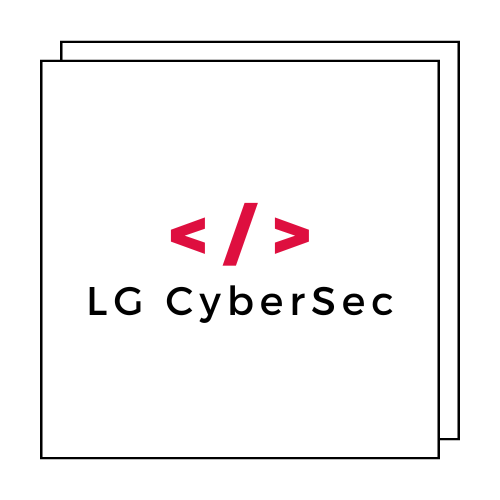In an alarming development that has caught the attention of cybersecurity experts worldwide, Ukraine’s Computer Emergency Response Team (CERT-UA) has issued urgent warnings about a sophisticated malware campaign leveraging CABINETRAT backdoor technology. This threat specifically targets organizations through weaponized Excel XLL add-ins disguised within seemingly innocent ZIP archives, representing a significant evolution in cybercriminal tactics that every business owner and individual user needs to understand.
The emergence of this threat underscores the critical importance of staying vigilant against evolving cyber threats, particularly for small and medium-sized businesses (SMBs) that often lack the extensive security resources of larger enterprises. As cybercriminals become increasingly sophisticated in their approach, understanding and preparing for threats like CABINETRAT has become essential for maintaining business continuity and protecting sensitive data.
Understanding the CABINETRAT Backdoor Threat
CABINETRAT represents a sophisticated backdoor malware that grants cybercriminals unauthorized access to infected systems. Unlike traditional malware that might display obvious signs of infection, this backdoor operates stealthily in the background, allowing attackers to maintain persistent access to compromised networks without detection.
According to Ukraine’s CERT-UA, this particular campaign demonstrates several concerning characteristics that make it especially dangerous for business environments. The malware is designed to evade traditional security measures while establishing stable communication channels with command-and-control servers operated by threat actors.
The backdoor functionality enables attackers to perform various malicious activities, including data exfiltration, lateral movement within networks, and the deployment of additional malware payloads. For businesses, this could mean unauthorized access to customer data, financial information, intellectual property, and other critical business assets.
The Role of Excel XLL Add-ins in Modern Cyber Attacks
Excel XLL (Excel Add-In) files have become an increasingly popular vector for cybercriminals, and for good reason from their perspective. XLL files are legitimate Excel add-ins that can execute code when opened, making them perfect Trojan horses for malicious payloads. Microsoft’s security research has documented a significant increase in XLL-based attacks throughout 2024 and 2025.
The appeal of XLL files for cybercriminals stems from several factors:
- Legitimate appearance: XLL files appear as standard Excel add-ins, making them less suspicious to users
- Code execution capability: Unlike macros, XLL files can execute without triggering macro security warnings
- Bypass potential: Many security solutions may not scrutinize XLL files as thoroughly as other executable formats
- User trust: Business users are accustomed to working with Excel files and may be less cautious with add-ins
The CABINETRAT campaign specifically exploits these characteristics by embedding malicious XLL files within ZIP archives, adding another layer of obfuscation that can help bypass email security filters and user suspicion.
How the Signal ZIP Distribution Method Works
The distribution mechanism for this CABINETRAT campaign involves a multi-stage approach that demonstrates significant tactical sophistication. The attackers begin by distributing ZIP archives through various channels, including email attachments, file-sharing platforms, and potentially through compromised websites.
These ZIP files are carefully crafted to appear legitimate, often using names that suggest they contain important business documents, software updates, or other materials that busy professionals might be inclined to open. The compressed nature of ZIP files also helps evade certain security scanning mechanisms that might otherwise detect the malicious XLL payload.
Once a user extracts the ZIP archive and opens the contained XLL file, the malware begins its infection process. The XLL file leverages Excel’s add-in functionality to execute malicious code, which then downloads and installs the CABINETRAT backdoor onto the victim’s system. This entire process can occur with minimal user interaction beyond the initial file opening, making it particularly dangerous.
The use of legitimate file formats and compression methods makes this attack vector especially concerning for businesses that regularly exchange documents and files with partners, clients, and vendors. Professional cybersecurity assessment can help organizations identify vulnerabilities in their file handling processes.
Impact on Small and Medium-Sized Businesses
Small and medium-sized businesses face particular challenges when defending against sophisticated threats like CABINETRAT. Unlike large enterprises with dedicated security teams and advanced threat detection systems, SMBs often rely on basic antivirus software and employee awareness training to maintain their cybersecurity posture.
Recent industry research indicates that SMBs experience cyberattacks at alarming rates, with the average cost of a successful breach reaching hundreds of thousands of dollars. The persistent nature of backdoor malware like CABINETRAT can amplify these costs significantly, as attackers may maintain access for extended periods before detection.
Consider the following potential impacts on SMB operations:
- Data theft: Customer information, financial records, and proprietary business data at risk
- Operational disruption: System compromises can halt business operations and productivity
- Regulatory compliance issues: Data breaches may trigger GDPR, HIPAA, or other regulatory penalties
- Reputation damage: Customer trust and business relationships may suffer following security incidents
- Recovery costs: Incident response, system restoration, and business continuity measures
The Excel-based delivery method is particularly concerning for SMBs because Microsoft Office applications are ubiquitous in business environments, and employees regularly work with Excel files as part of their daily operations.
Essential Protection Strategies and Best Practices
Protecting your organization against CABINETRAT and similar threats requires a multi-layered approach that combines technology solutions with employee awareness and organizational policies. The following strategies provide comprehensive protection against XLL-based malware campaigns:
Technical Security Measures
Email security enhancement represents the first line of defense against these threats. Implement advanced email filtering solutions that can detect and quarantine suspicious ZIP attachments and XLL files. Configure your email system to flag or block XLL files unless they originate from trusted sources within your organization.
Endpoint protection upgrades should include solutions capable of behavioral analysis and advanced threat detection. Traditional signature-based antivirus may not detect new variants of CABINETRAT, making behavioral monitoring essential for identifying suspicious activity patterns.
Consider implementing application control policies that restrict the execution of XLL files. Microsoft Office allows administrators to configure Group Policy settings that can prevent unauthorized add-ins from loading, providing an effective defense against this attack vector.
Employee Training and Awareness
Regular cybersecurity awareness training should specifically address the risks associated with Excel add-ins and compressed file attachments. Employees need to understand how to verify the legitimacy of files they receive and the proper procedures for handling suspicious attachments.
Implement a clear reporting mechanism that encourages employees to report suspicious emails or files without fear of retribution. Quick reporting can prevent the spread of malware and limit potential damage to your organization.
Organizational Policies and Procedures
Develop and enforce policies regarding file handling, particularly for attachments received from external sources. These policies should include requirements for verification of unexpected attachments and mandatory security scanning of files before opening.
Regular security assessments and penetration testing can help identify vulnerabilities in your current security posture. Professional security evaluation services can provide valuable insights into your organization’s readiness to handle advanced threats.
Incident Response and Recovery Planning
Despite best prevention efforts, organizations must prepare for the possibility of a successful attack. A well-developed incident response plan can significantly reduce the impact of a CABINETRAT infection and facilitate faster recovery.
Your incident response plan should include immediate containment procedures to isolate infected systems and prevent lateral movement of the malware within your network. This includes having detailed network segmentation strategies and the ability to quickly disconnect compromised systems from critical business resources.
Communication protocols are essential during security incidents. Establish clear chains of command for incident response and prepare communication templates for notifying stakeholders, customers, and regulatory bodies as required. CISA’s incident response guidelines provide excellent frameworks for developing these protocols.
Regular backup procedures and testing become critical when dealing with backdoor malware that may have provided extended access to your systems. Ensure that your backup systems are isolated from production networks and test recovery procedures regularly to verify their effectiveness.
Consider partnering with cybersecurity professionals who can provide rapid incident response services. The complexity of modern malware like CABINETRAT often requires specialized expertise to fully remediate infections and ensure complete removal.
Staying Ahead of Evolving Threats
The CABINETRAT campaign represents just one example of how cybercriminals continue to evolve their tactics to bypass traditional security measures. Industry reports indicate a dramatic increase in Excel-based attacks throughout 2024, suggesting that this threat vector will continue to be popular among attackers.
Organizations must adopt a proactive approach to cybersecurity that includes continuous monitoring of threat intelligence sources and regular updates to security policies and procedures. Subscribe to cybersecurity alerts from organizations like CERT-UA, CISA, and other relevant authorities to stay informed about emerging threats.
Investment in advanced security technologies, including artificial intelligence-powered threat detection and response capabilities, can help organizations identify and respond to novel attack methods more effectively. However, technology alone cannot provide complete protection; it must be combined with ongoing training, policy enforcement, and strategic security planning.
Conclusion: Taking Action Against CABINETRAT and Similar Threats
The emergence of the CABINETRAT backdoor campaign using Excel XLL add-ins distributed via ZIP archives represents a significant evolution in cybercriminal tactics that demands immediate attention from businesses of all sizes. This sophisticated attack method exploits the trust users place in common business file formats while leveraging legitimate Microsoft Office functionality to evade detection.
For small and medium-sized businesses, the threat is particularly acute due to resource constraints and the widespread use of Excel in daily business operations. However, with proper preparation, training, and security measures, organizations can significantly reduce their risk exposure and protect their critical assets.
The key to effective defense lies in adopting a comprehensive, multi-layered security approach that combines advanced technical controls, employee awareness training, and robust incident response planning. Regular security assessments and staying informed about emerging threats like CABINETRAT will help ensure your organization remains protected as the threat landscape continues to evolve.
Don’t wait for a security incident to evaluate your organization’s cybersecurity posture. Contact LG CyberSec today to schedule a comprehensive security assessment and develop a tailored protection strategy that addresses the specific needs and risks facing your business. Our team of cybersecurity experts can help you implement the technical controls, policies, and procedures necessary to defend against advanced threats like CABINETRAT and maintain the security of your critical business operations.
Remember, in cybersecurity, prevention is always more cost-effective than remediation. Take action now to protect your business from the evolving threat landscape and ensure your organization’s continued success in an increasingly digital world.

